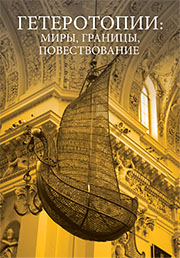Географические карты раннего Нового времени как эстетизация и концептуализация репрезен- тированного пространства
World Maps of the Early Modern Period as an Effort to Create Aesthetic and Conception of a Geographic Object
Author(s): Anton NesterovSubject(s): Maps / Cartography, Studies of Literature, Aesthetics, 16th Century
Published by: Vilniaus Universiteto Leidykla
Summary/Abstract: As we look at a map, our contemporaries think about its usability, cartographic accuracy and correspondence to some area of the Earth. The art maps of the early Modern period could accumulate some extra features, providing various types of concepts created for this or that place, forming imago mundi. Some cartographic projection, especially Stab-Werner projection, could provoke shaping of our world as a heart – this image was used by Oroncius Fineus in his cardiform world map of 1536. The map was intensively rethought by such authors of XVII century as John Donne and others. Fineus’ cartographic masterpiece created a trend to delineate figure maps that were linked to the tradition of emblematic, as so called Fool Cap’s Map of the World of 1590. The later cardiographs used the decorative borders of the world maps to make some special emphasis on this or that aspect of the work and from time to time the same map could bring various messages being decorated with different frame pictures. Due to this, it is more reasonable to see something more than an objective representation of the world in the maps of the early Modern period and take them as concepts.
Journal: Literatūra
- Issue Year: 57/2015
- Issue No: 5
- Page Range: 88-110
- Page Count: 23
- Language: Russian

